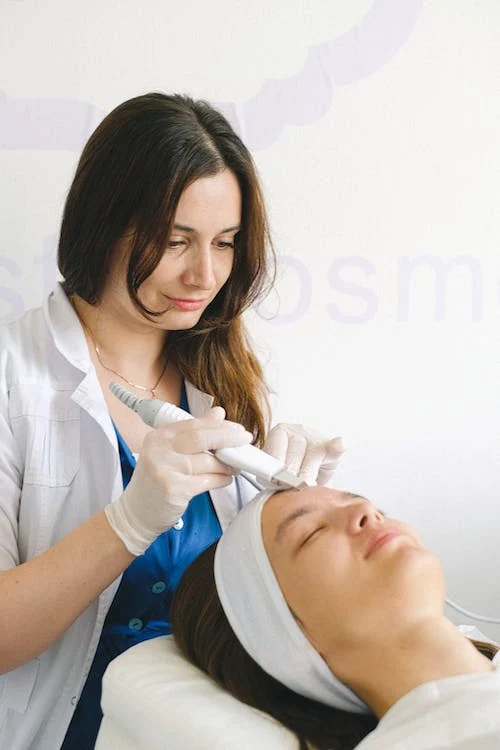Light therapy is a noninvasive treatment believed to help alleviate multiple types of health-related issues. When used as a complementary treatment, light therapy is said to be beneficial to persons suffering from skin, muscle, and joint problems.
These days, red light therapy (RLT) may be the most popular of the different kinds of light therapy on the market. Known for its many names, like photobiomodulation, low-level laser therapy, soft laser therapy, and low-power laser therapy, RLT involves exposing your treatment area to low levels of near-infrared light.
Ahead, you’ll find few vital questions you must ask yourself before getting this type of treatment.
1. How Does Light Therapy Work?
Red light therapy benefits are believed to include generating biochemical effects in cells, which enhances the mitochondria—the cells’ energy powerhouses. As the rate of mitochondria production increases, so does the body’s ability to create adenosine triphosphate, the energy source for all living things.
This energy-inducing function of RLT could boost overall cell performance, creating a positive ripple effect in restoring, refreshing, and repairing cells. It’s also believed to reduce oxidative stress, making one feel refreshed. You can get additional information about red and blue light therapy and more tips here.
2. Is Light Therapy Safe?
For those who often go to salons and beauty centers, you may have heard about laser or intense pulsed light treatment. This treatment works differently from light therapy because it causes regulated damage to the skin to trigger skin repair.
RLT is thought to be safe as it doesn’t involve destroying any body part. It works by directly inducing skin regeneration by penetrating the skin.
But while believed to be generally safe, those with retinal problems or taking certain medications that increase photosensitivity should best avoid this treatment. So should individuals diagnosed with lupus or with a history of skin cancer.
3. Is Light Therapy The Right Treatment?
There are numerous conditions where RLT may be of use. Nevertheless, light therapy should only be an adjunct therapy. This means patients must still take their prescribed treatment.
Persons suffering from the following conditions could benefit from red light therapy:
- Pain and inflammation
- Tissue degeneration
- Side effects of cancer
- Neurodegenerative issues
- Eyesight problems
- Autoimmune diseases
- Reduced athletic performance
- Skin problems such as eczema, wrinkles, and other signs of aging
- Hair loss
- Wound healing
These are the most common applications for RLT, but practitioners are still looking into its other potential uses. There’s also blue light therapy, which is used mainly for helping ease skin damage, acne, and depression.
4. What Are The Risks And Side Effects Of Light Therapy?
As one of the more popular noninvasive beauty treatments, RLT is known to be safe and painless and not to cause significant side effects. The potential side effects of RLT include redness, bruising, peeping, and minor skin irritation. However, these may go away on their own after a few hours.
Technical issues and human error may interfere with the ideal results. Because RLT uses machines run by electricity, operators must check it before use. Rare cases of superficial burns have occurred because of faulty wires and busted units.
Additionally, an inexperienced therapist who doesn’t know the machine’s accurate configurations may not work in your favor. For instance, too much light may lead to tissue damage, and too little light means it won’t work its purpose.
5. Is Light Therapy Worth It?
Like other nonsurgical treatments, a person would have to undergo several RLTs before it could work its wonders. The cost of RLT would depend on your location and the size of the treatment area. A 10- to 15-minute session may range from USD$50 to USD$150. Some beauty clinics may offer additional services, such as facial and massage, alongside this treatment.
You can use RLT machines at home, with units costing USD$400 and up, depending on their features, capabilities, and size. If you think you need the machine longer or you’re facing severe health rather than cosmetic issues, it may be a better idea to invest in a machine at home.
It’s likewise challenging to tell how many sessions you need, but generally up to four months may show visible results. Again, this would depend on the severity of your condition and the size of the treatment area. The treatment period would also depend on your body’s reaction to light therapy.
Takeaway
Although the medical community has yet to validate the efficacy of light therapy, anecdotal evidence seems to show encouraging results, especially for improving various skin conditions. While it’s noninvasive and relatively safe, you need to ask your doctor about undergoing light therapy first, especially if you have severe health conditions.

